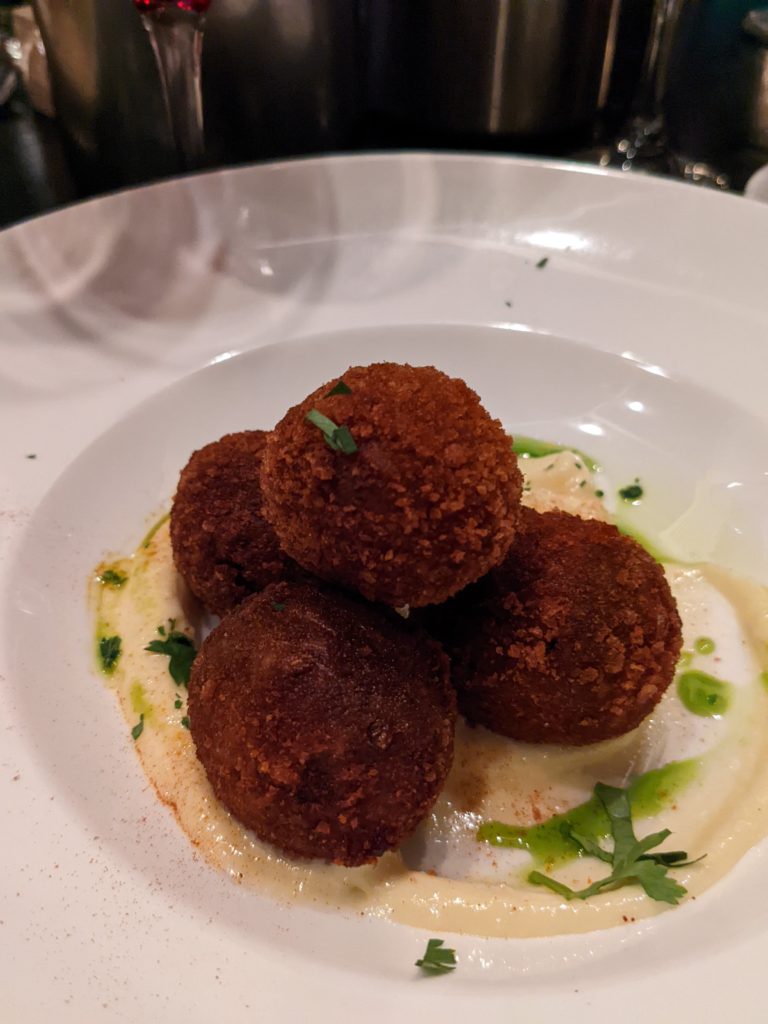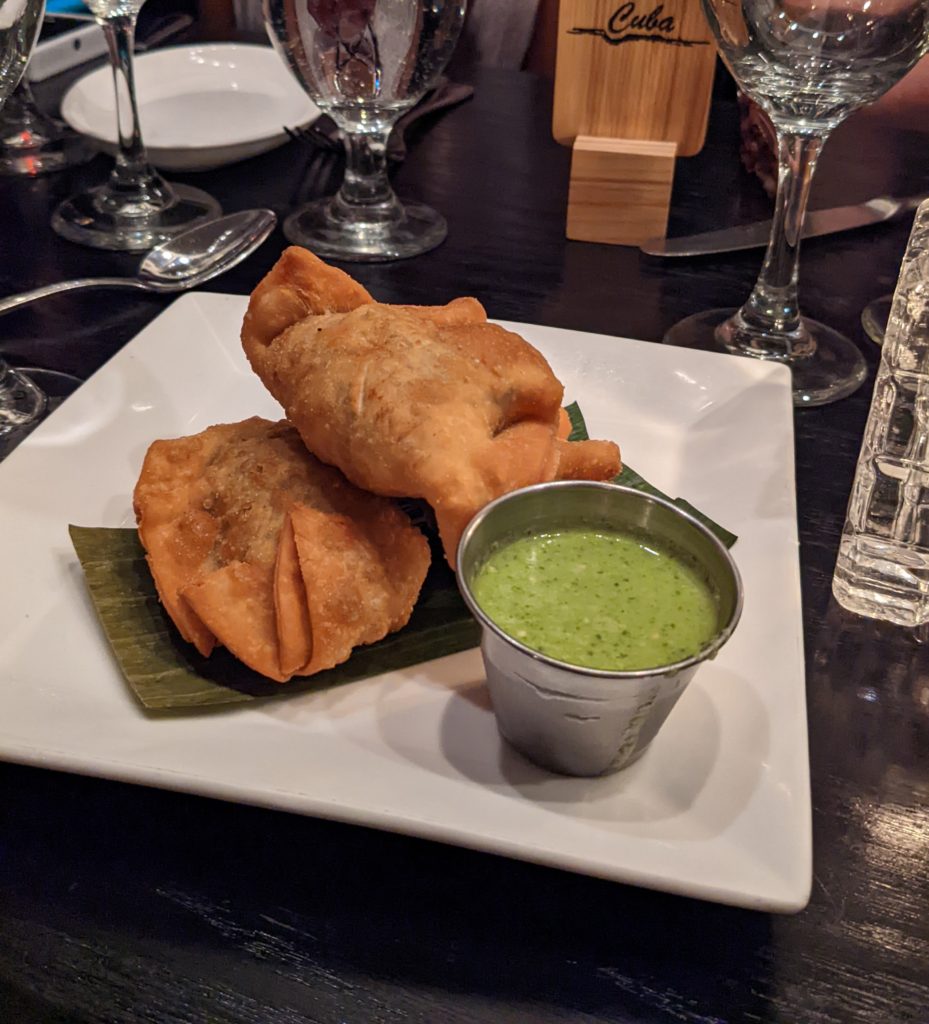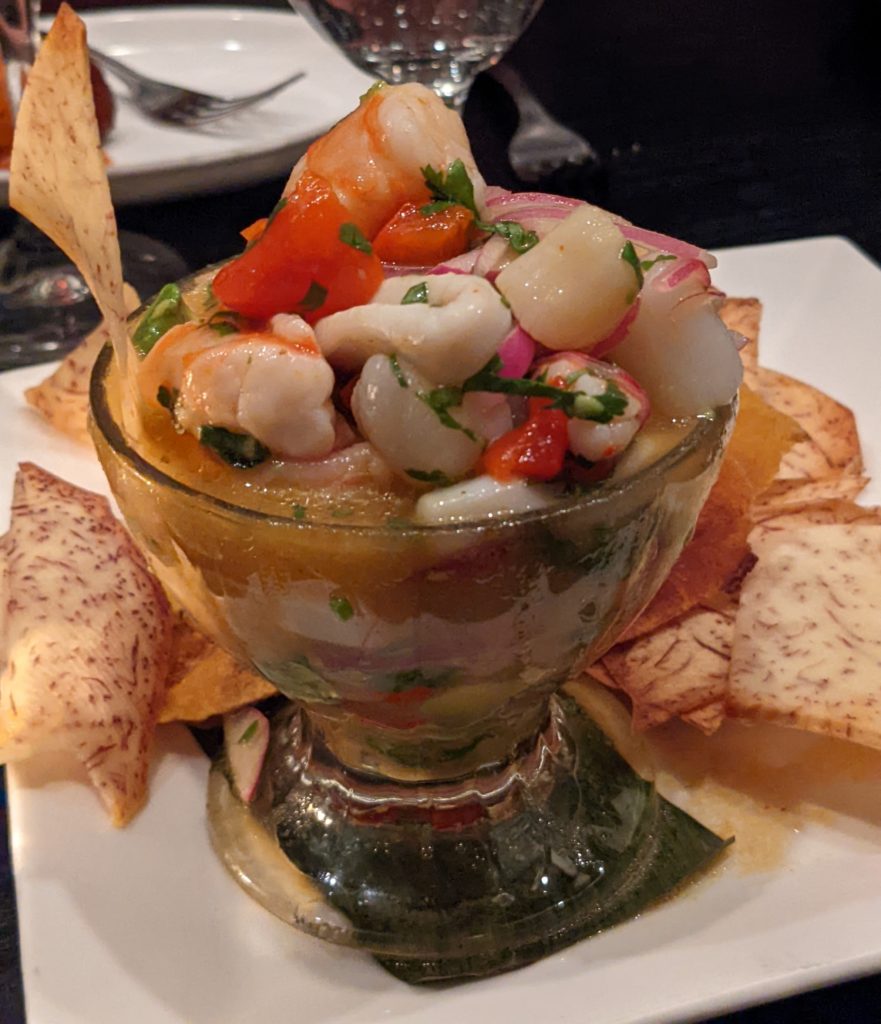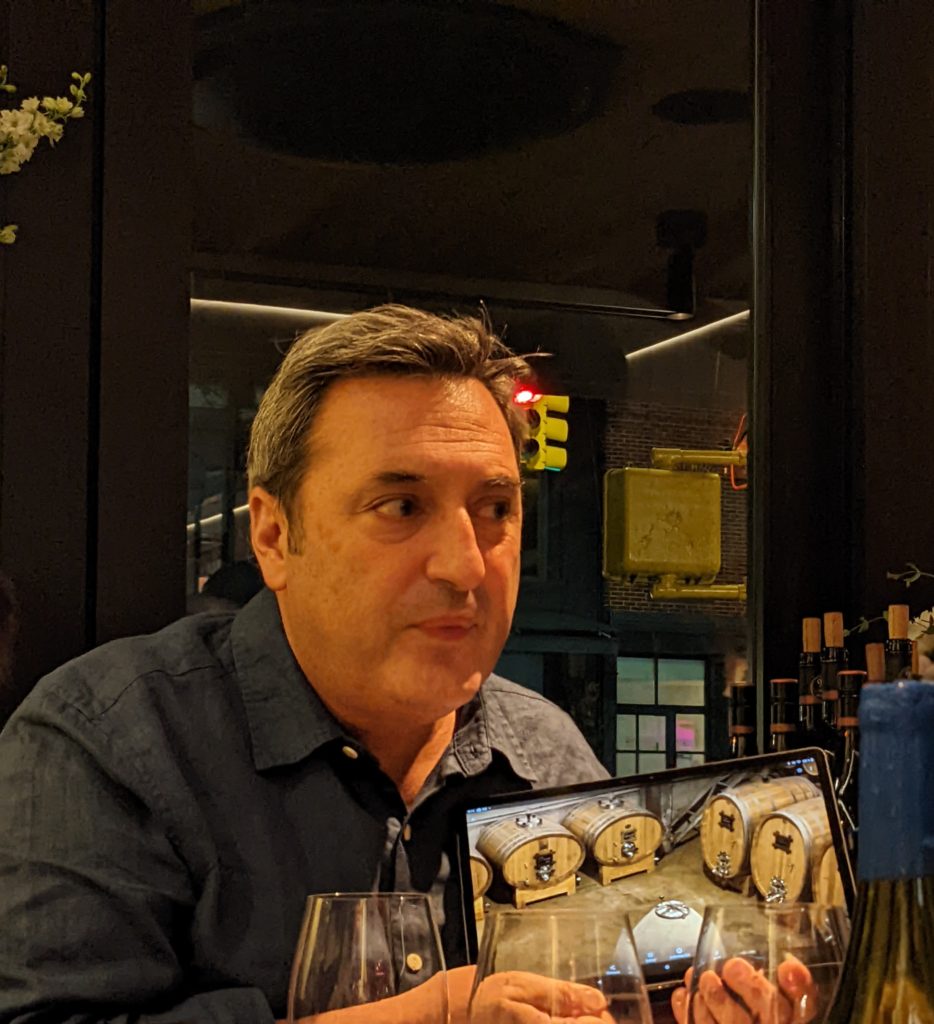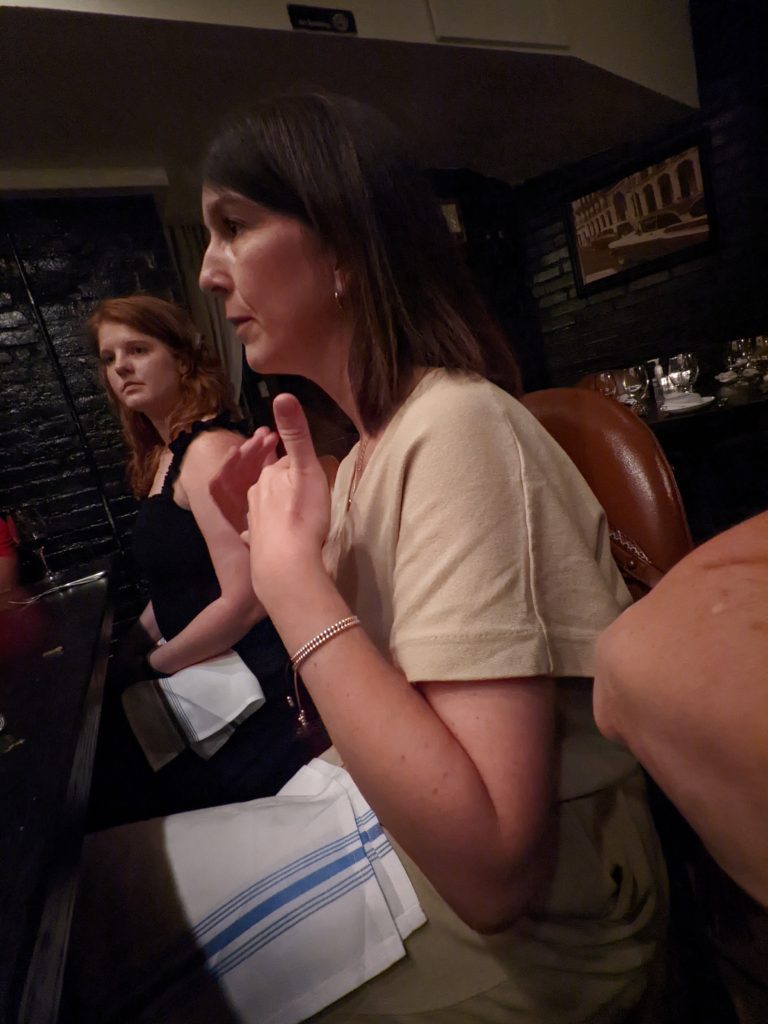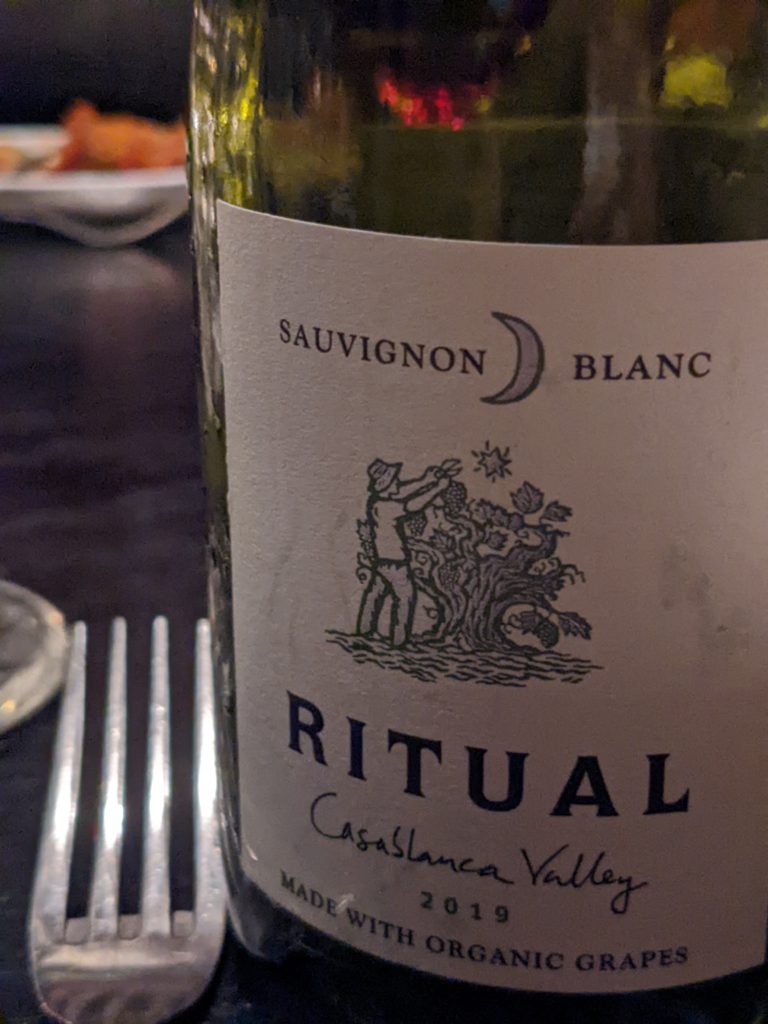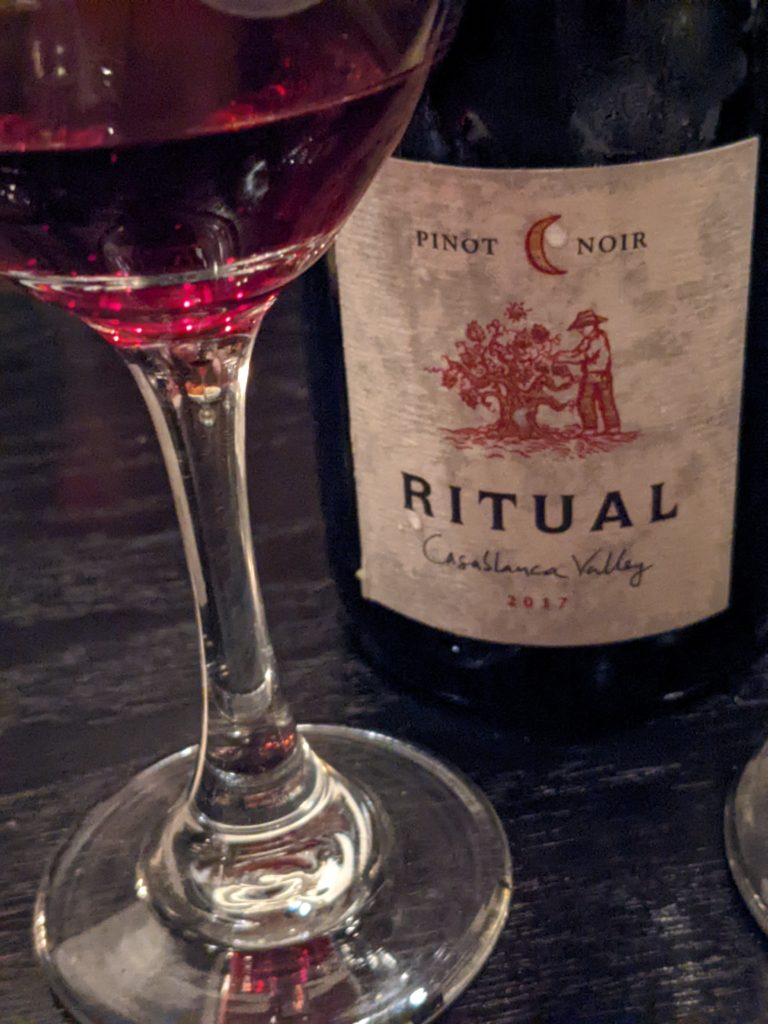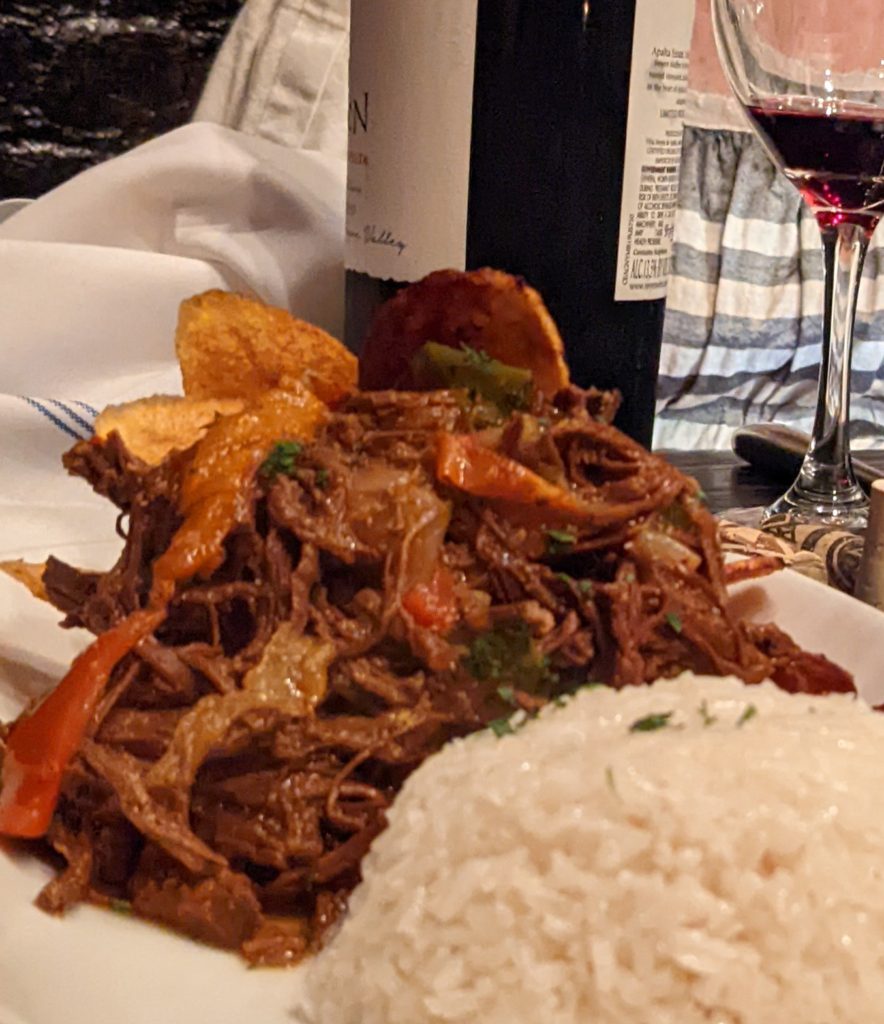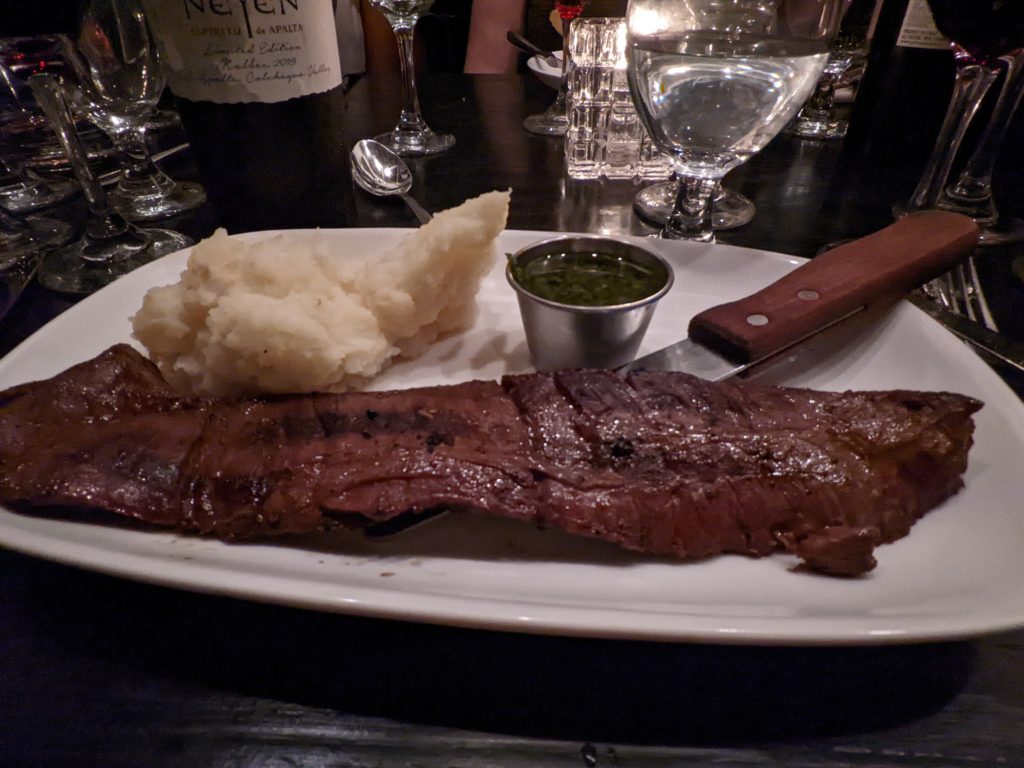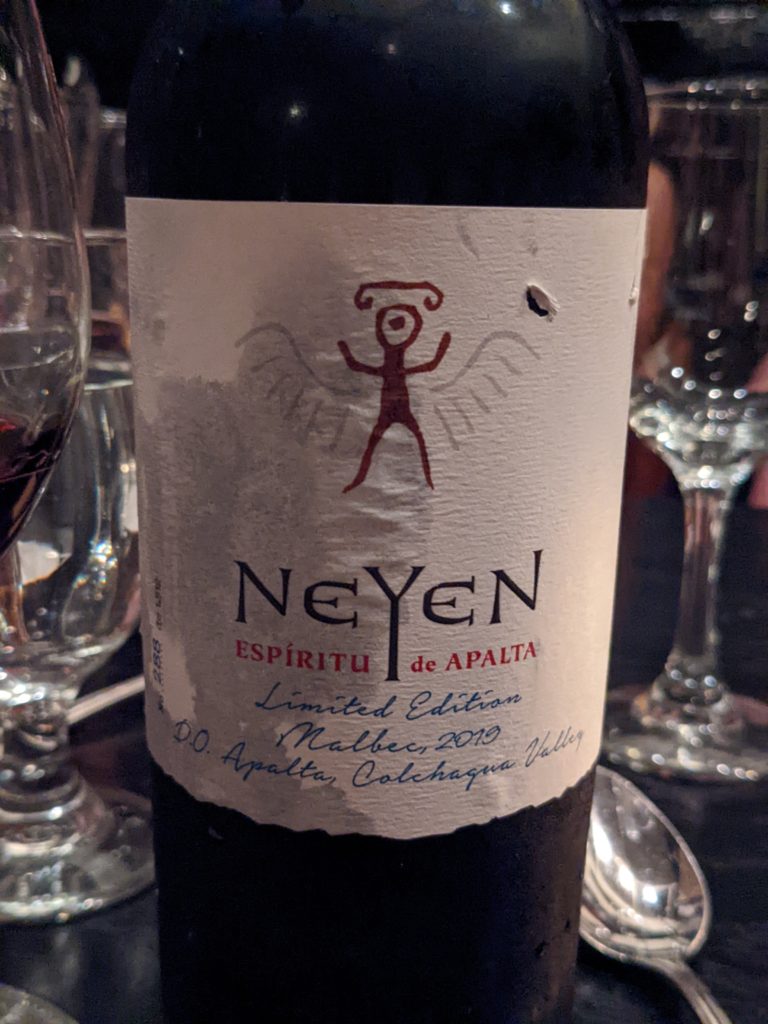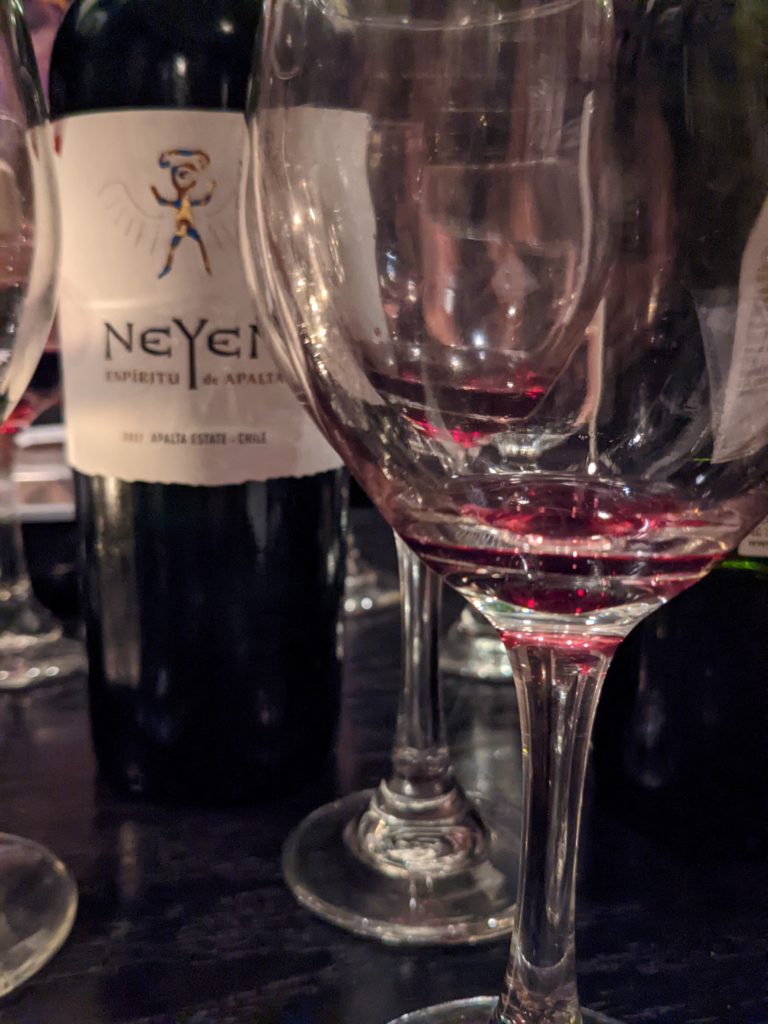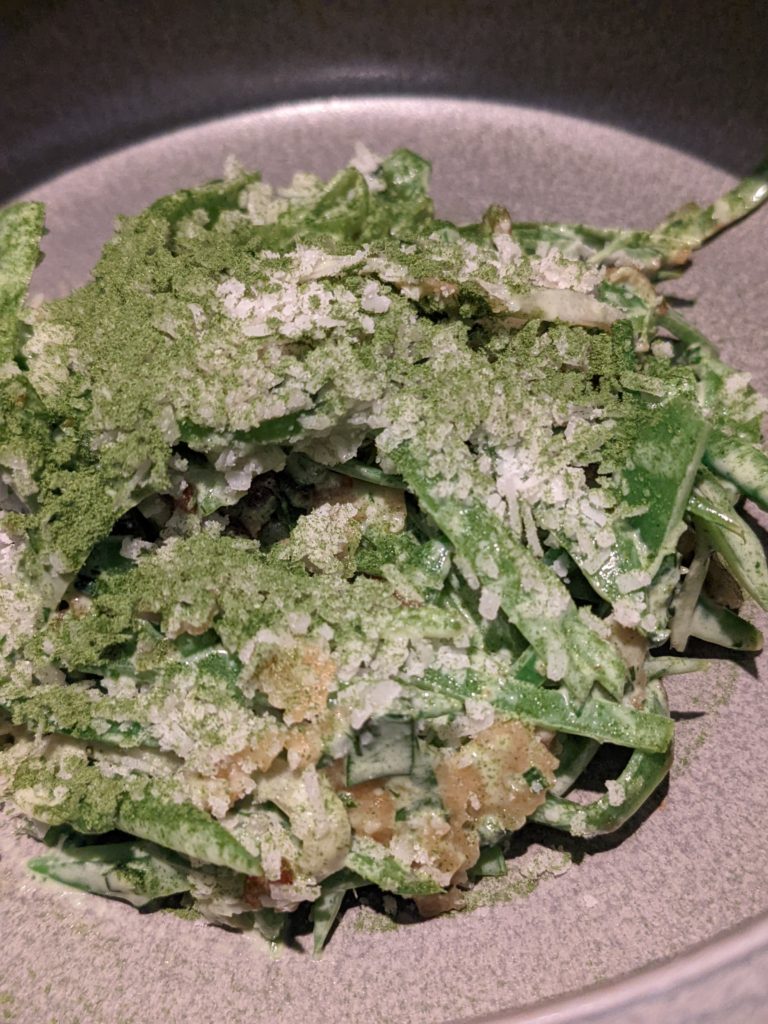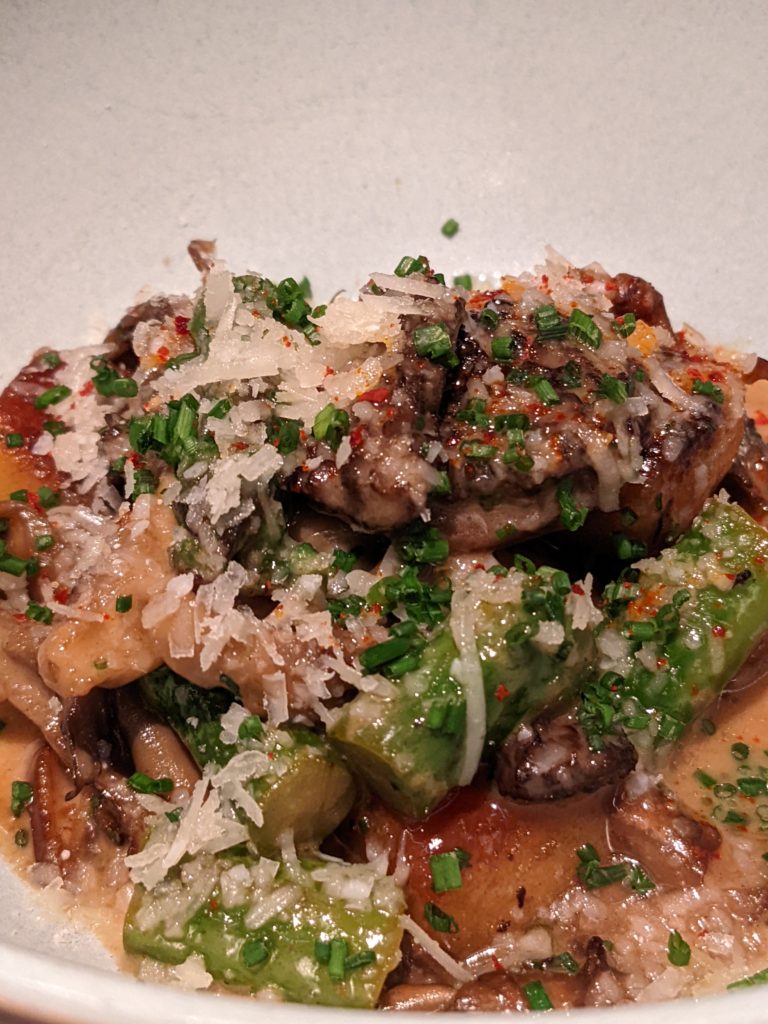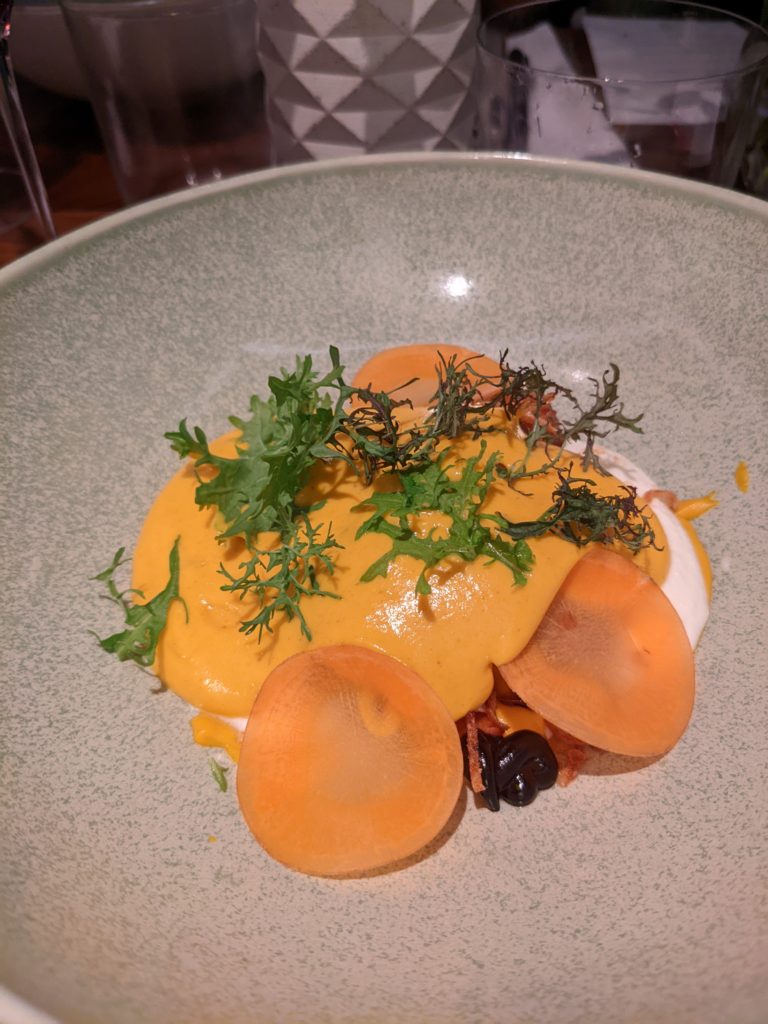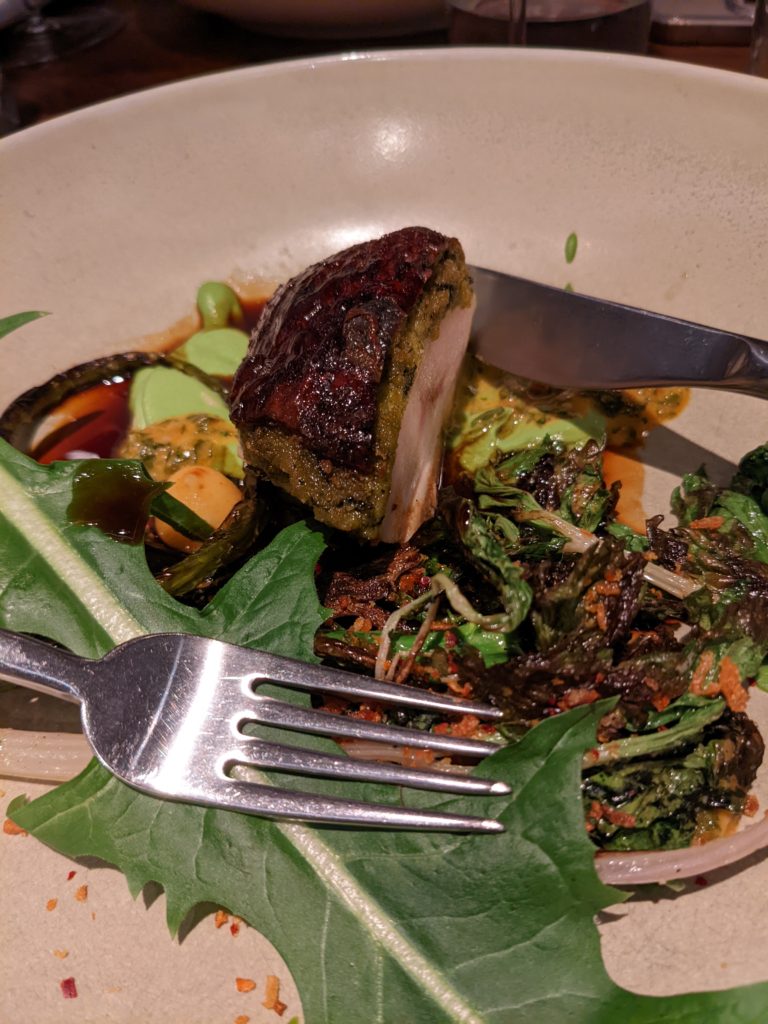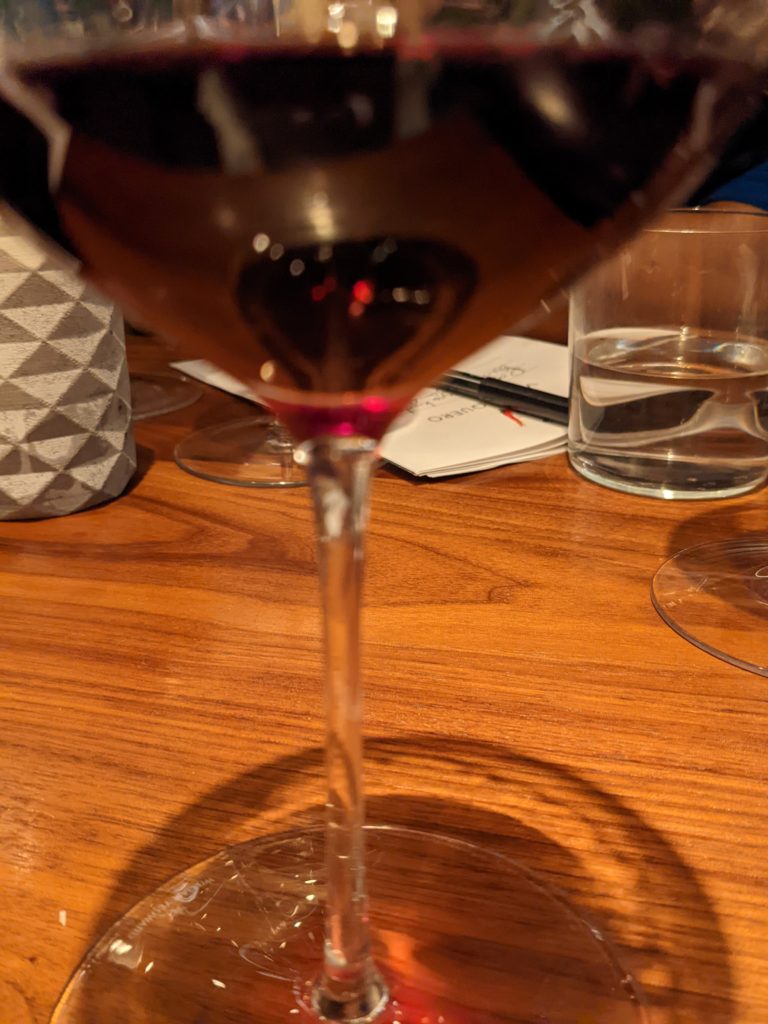
Chile is no longer just about cheap and cheerful wines. As my experiences at recent dinners with Chilean winemakers and their wines can attest, Chile as a wine producing country is all grown up and has become quite precocious. While there is still a wealth of options under $20 retail, Chile is starting to craft and export higher end wines, building on its historic vinous legacy.
European grape vines have been grown in Chile since the mid-16th century, when the Spanish conquistadores brought them over with the intention of making Communion wine for their settlers. The vines flourished in the country and continued to be cultivated widely, earning Chile a reputation for quantity over quality in the 18th century.
Yet, an interesting development came in 1830 when the Chilean government created an experimental nursery for botanical selections, which became known as the Quinta Normal. The nursery included vine cuttings of the European species, which would ultimately help combat phylloxera, providing European nations with clean root stock from which to propagate new vines. Moreover, due to its isolation from the rest of the world, along with favorable climatic conditions, phylloxera never became an issue in Chile.
Additionally, while the initial plantings were predominantly Pais and Moscatel, in the 1850s, wealthy Chileans began to plant more classic, world-renowned grapes such as Cabernet Sauvignon, Merlot, Sauvignon Blanc and others. Concurrently, many French winemakers emigrated to Chile to escape the phylloxera crisis, bringing their winemaking knowledge and experience to the Chilean wine industry.
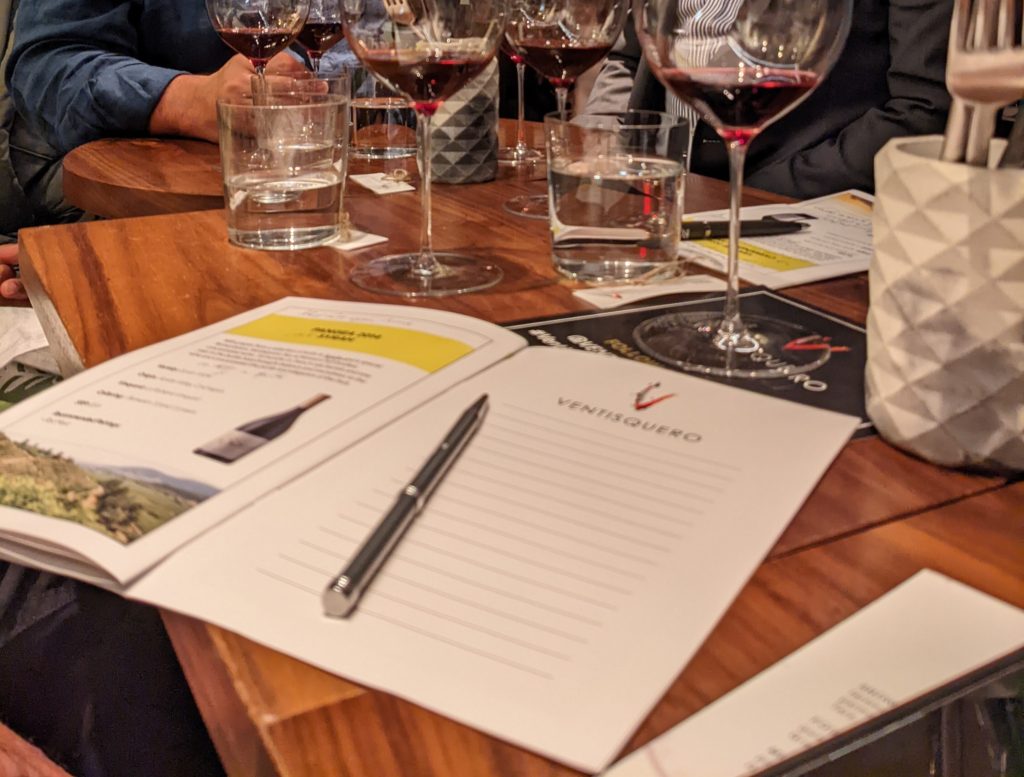
With this boon of clean vines and qualified winemakers, Chile soon emerged as “the world’s only healthy wine industry, both viticulturally and financially…” (Oxford Companion to Wine, 4th edition, Jancis Robinson, Julia Harding, Oxford University Press, 2015). That success continued throughout the 20th century, but the tides began to turn in the 1970s and 80s as domestic consumption waned considerably and vines were ripped out since the industry was no longer the profitable enterprise it once was.
However, this downturn was short-lived and by the late 1980s through the mid-90s, significant plantings and investment were being made. Concurrently, the Chileans began to look externally for markets and soon found success as an exporter, firmly establishing itself in the world wine market.
Today, Chile is the sixth-largest wine producer in the world* and, in 2021, it became the third largest source of imported wines (bulk and bottled) shipped to the U.S.#. And, while much of that success was initially predicated on the low end of the market, things have taken a dramatic shift as of late, as more Chilean wines are competing in the super-premium and luxury categories.
More specifically, as Julio Alonso, Executive Director USA for Wines of Chile, recently stated, “…one of the most significant long-term trends has been the entry of Chilean wines at the luxury level,” which is backed up by the numbers: Chilean wines registered an increase of 56% in the $50-$100 segment (aka luxury category) and 62% in the $100-plus category (Nielsen IQ, 52 weeks through Nov. 6, 2021) super luxury and icon categories. [For a detailed look at U.S. wine pricing segments, see this page.]
Appetizers at Cuba Restaurant
So, what’s happening on the ground to drive these changes? A lot. The industry has come of age both vinously and viticulturally. The current crop of Chilean winemakers have the skills, experience and world view, while Chilean wine brands now have proven histories and sufficient resources. Equally important, the vineyards have been carefully cultivated with newfound knowledge as to what does and doesn’t work.
Felipe Tosso and Sofia Araya
By way of example, both Veramonte and Ventisquero have been actively engaged in establishing high quality vines in new terroirs, experimenting with classic and modern winemaking and finding their stride with Carménère.
Ventisquero, founded in 1998 by business man Gonzalo Vial, has always been at the forefront of the Chilean wine industry. The brand encourages its winemakers to pursue an innovative spirit that combines curiosity, creative freedom, a willingness to take risks, and an intense exploration of the senses. Accordingly, its winemakers are given the latitude to experiment and challenge the established way of doing things.
At the helm is Head winemaker Felipe Tosso who was recently chosen as Winemaker of the Year 2022 by Tim Atkin. This year, Felipe celebrated his 22nd harvest with Ventisquero and has an extensive and varied background with stints in Napa, Sonoma, Barossa and Bordeaux, among others. Adding to his expertise, in 2003, Felipe began to collaborate with John Duval, former winemaker of Penfold’s Grange, which has been a beneficial and rewarding partnership for both of them.
Further, as the son of researchers, Felipe approaches winemaking with a scientific view. In this regard, he asked: How do you make wine in the simplest way? Building on this question, he looked to natural winemaking as the answer. He notes that the concept wasn’t as popular when they started, but even though he may not have used that term to describe what they were doing at the time, they’ve always been natural winemakers in practice.
With his depth and breadth of knowledge, Felipe knows how to make wine, but of perhaps greater importance, it is a true passion for him. As he shared, “We make wine for the fun of making wine. When you have confidence, you can create the wines you love.” It is this confidence that shows through in the wines he has been pursuing, which are decidedly at the higher end of the market.
Similarly, Sofia Araya, head winemaker for Veramonte, has been an important force in Chilean wine, most notably as a huge driver in organic viticulture. After graduating from la Universidad de Chile, the Chilean-born winemaker spent her early career working for big name brands, using conventional agriculture. When she arrived at Veramonte, the company began to make investments in the Casablanca Valley. They quickly realized that it didn’t make sense to work these vineyards conventionally, so they switched to organic practices.
Ultimately, it was her strong conviction in the resulting quality that sold her on implementing such practices elsewhere. As she reminded us, “Wine is made in the vineyards.” The transition to organics began in 2012, with full certification received in 2016. Since then, she has been involved with transitioning over 1,235 acres to 100% ECOCERT certified organic vineyards, which accounts for 15% of all organic vineyards in Chile.
Beyond general viticulture practices, Sofia has focused on matching different locations with different grapes and implementing various strategies to ultimately produce the best wines. Her essential aim is to create wines that transmit a sense of place in the glass. While this is true of her entry level wines, it takes on a deeper meaning as she turns her attention to regional expressions, which display more complexity and require more technical applications such as the intricacies of barrel fermentation.
To this end, her Ritual wines are sourced from vineyards in the Casablanca Valley, relying on the cold influences from the Pacific ocean to maintain bright acidity and freshness in the grapes. Here, she sought to overcome preconceived ideas about Sauvignon Blanc in crafting her wine. Additionally, the grapes are hand-picked and kept on their stems to impart structure, develop mouthfeel and be able to take (old) oak during the aging process.
In approaching her Ritual Pinot Noir, she selects grapes from the better blocks and treats them to a native fermentation, yielding a totally different, more elegant wine than previous iterations. Interestingly, she notes that it was the Pinot that showed the most significant changes with the shift to organic.
Like Veramonte, Ventisquero is also taking viticultural innovation to heart. It has vast vineyard holdings and has implemented sustainability practices throughout the entire process and is also exploring the intricacies of climate and soils. In particular, its vineyards run nearly the full length of Chile from the Atacama Desert up north to Patagonia in the south. With plantings situated within six different regions, they are able to explore the unique terroir of each vineyard through precision soil mapping and terroir-focused replanting.
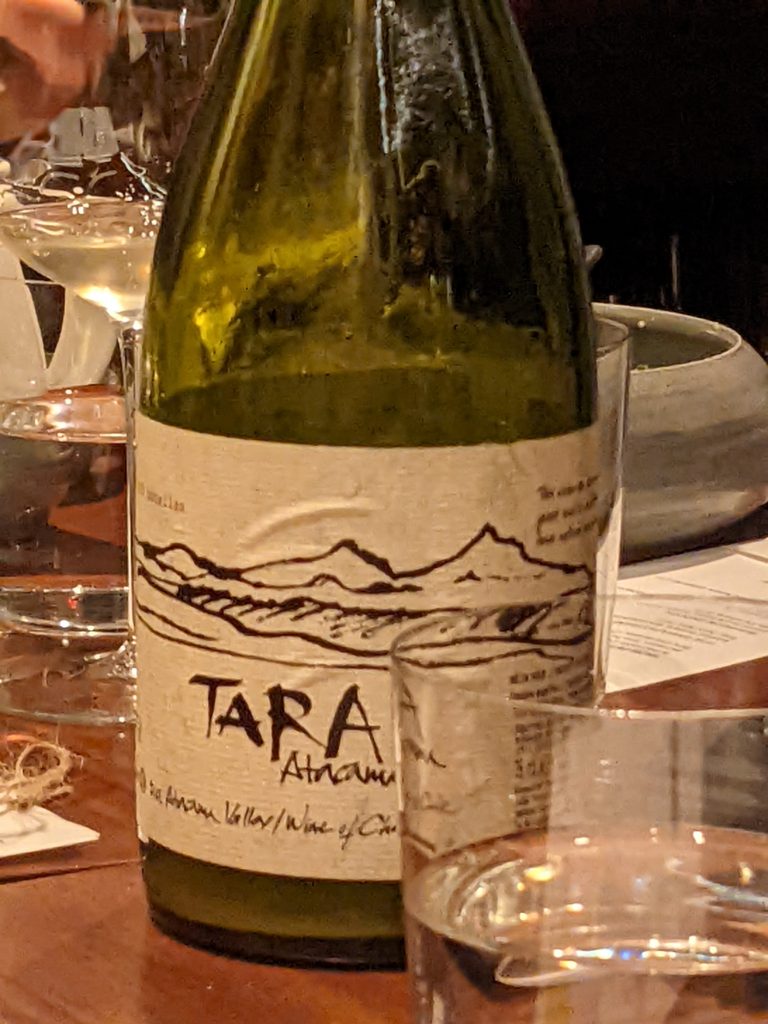
Case in point is their Tara Chardonnay which is produced from grapes grown in the Atacama Desert. While a true desert in its lack of moisture, this is a cool climate region, with significant exposure to the Pacific Ocean due to the lack of coastal range in this area. Consequently, the fog rolls in each morning, keeping the vineyards in the 50-75o F range. The result is a Chardonnay that is not very “Chardonnay-like”. In fact, it tastes more like a Sauvignon Blanc and was originally labeled as White Wine #1. The hand-harvested grapes are pressed by feet, and then matured in stainless steel for 15 months, with sur lie aging. Previously made without sulfites, with the 4th vintage, they are using a small amount to prevent oxidation.
Ventisquero’s Las Terrazas vineyard in the Leyda Valley sits only four miles from the cold Pacific Ocean, serving as the perfect climate for cultivating Pinot Noir. In speaking about his Grey Pinot Noir, Felipe admits that sometimes the decisions you make are not technical in nature, but rather are made by trial and error. With the 2017 vintage, the Pinot Noir was whole bunch pressed and fermented in small vessels with no filtration.
Both wineries have also been at the forefront of establishing the newly minted (as of May 2018) DO Apalta and are two of only six wineries permitted to cultivate on the hillsides here, capturing the sunlight. Located in Colchagua, which is part of the Rapel region, the 1,007 hectares are farmed both organically and biodynamically and reflect the country’s growing focus on defined terroirs.
In addition to the increased emphasis on regional identity, another important shift in the Chilean wine landscape has been the recognition of what grapes are actually being grown in the vineyards. Prior to 1994, Carménère vines were confused with those of Merlot, but now that it has been correctly identified, it is being embraced as a singularly Chilean variety, gaining respect and an understanding for how to grow and produce this grape. Along these lines, Felipe has been an early proponent of the variety, gaining significant experience working with Carménère from its initial discovery and has become the go-to guy for this grape ever since. As Felipe explained, “My soul is Chilean… we have a variety that is unique to Chile and we need to make it work.”
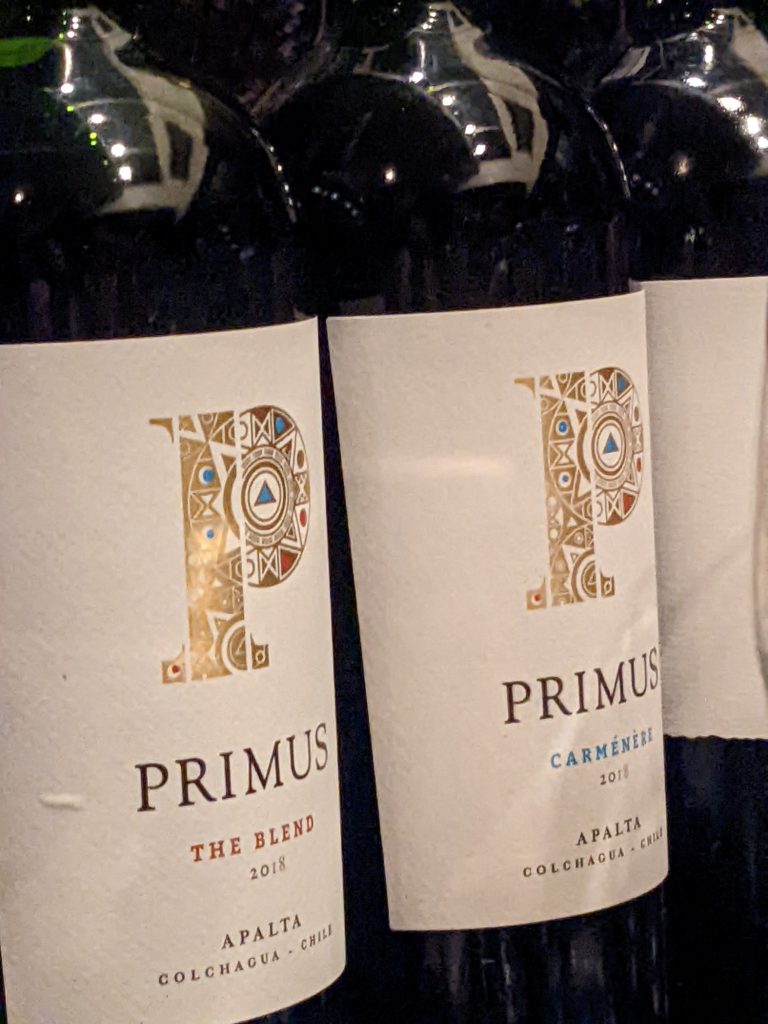
Specifically, at Ventisquero, Carménère is cultivated in the Trinidad Vineyard in Maipo Valley region as well as in the La Robleria vineyard in Apalta. Felipe started making the Grey Carménère from this single block (which is known as #5 and adjacent to the winery), 20 years ago. With its history as a co-planted vineyard, at the moment, the vineyard is 50% Carménère and 50% Merlot, with the vines painted to distinguish each variety since there are only two times a year that the difference is distinctly visible.
Sofia also believes in the value of Carménère and adds that it is a variety that needs time and heat to truly thrive. Older vines, previously mixed in with Merlot, are now being revered for their longevity and quality. In addition, she shared that, “Over time, we have learned to work with Carménère. We really understand it now,” and the resulting wines are not so green and herbal in character as they once were.
Beyond crafting varietally labeled Carménère, both wineries also use it in blends, which was a significant departure from status quo. At Veramonte, the Primus The Blend brings together Cabernet Sauvignon, Carménère, Merlot, Petit Verdot, Cabernet Franc and Syrah and was initially created at a time when blending wine was unthinkable. Named Primus, which means “first” in Latin, it was the first “Meritage” wine in Chile.
Ventisquero’s entry in this category is known as Vertice and it’s a special project bringing the Carménère Guy (Felipe) together with the Syrah expertise of John Duval. Named for the vertex of the slope, the vineyard sits at the top of a hillside, surrounded by Chilean oak trees. Felipe and John pursue classical winemaking with whole bunch maceration, a long fermentation, and one month on the skins, followed by malolactic fermentation in the barrel and two years of oak aging. In analyzing the final blend, Felipe focuses on texture while John evaluates the tannin.
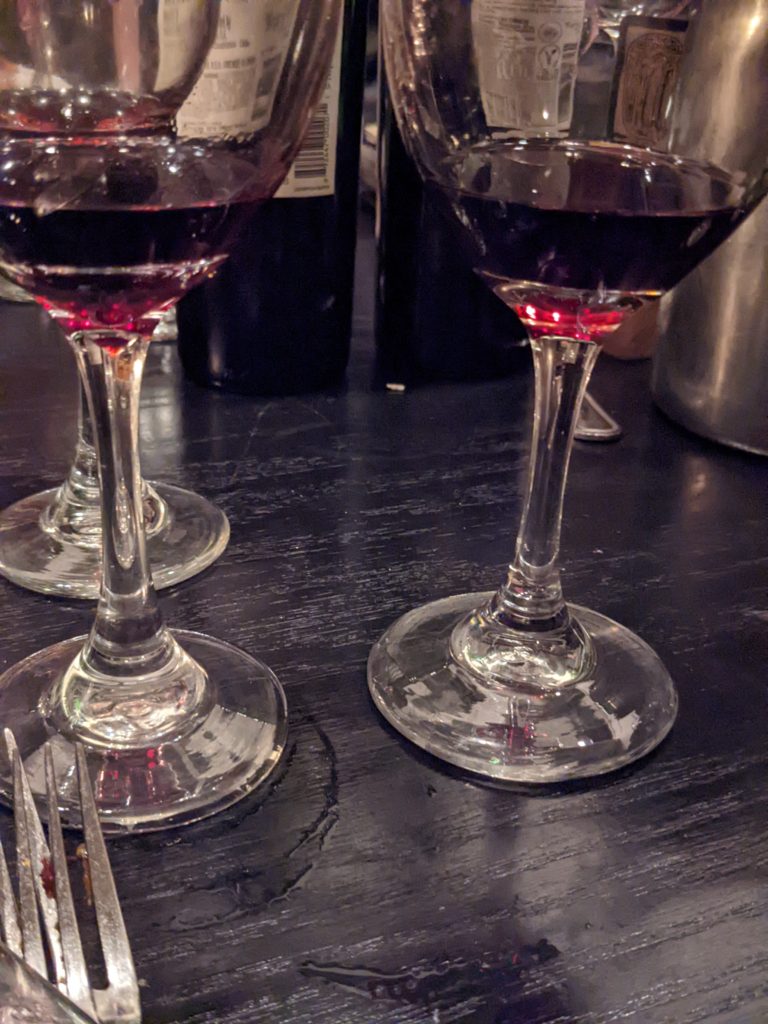
Building on these innovative successes, Felipe and Sofia continue to push the envelope in high end Chilean wine. In this regard, Ventisquero’s flagship wine, Pangea, was the first collaboration with John Duval. As they reviewed the La Robleria Vineyard site in Apalta, the two winemakers decided that the vineyard was best for Syrah, not Cabernet Sauvignon, mapping the vineyards and analyzing soil selection. The wine represents the spirit of Syrah and the union of the world in that Syrah has traveled around the world. Moreover, the finished wine is a product of various soil types, more than 20 different fermentations and 20 different coopers, all of which must be agreed upon 100% by both John and Felipe. Curiously, Felipe agrees with John more often than John’s wife agrees with him.
Meanwhile, it took ten years before they finally found the quality of Cabernet Sauvignon grapes they desired and could create the Enclave Cabernet Sauvignon, which they describe as a Chilean Bordeaux-style blend. With their commitment to quality, the wine is aged for two years in barrel and then another four years in bottle before release to give the tannins time to soften.
At its zenith, Veramonte’s Neyen wines are crafted from very old vines on their original, pre-phylloxera root stocks in Apalta. The limited production wine (only 12,000 bottles) features a blend of Cabernet Sauvignon and Carménère, the proportions of which vary from vintage to vintage. Most recently, they also launched a 100% Malbec produced from similarly aged vines.
As is evident with these wineries and winemakers, Chile has come a long way since it first entered the world wide wine market. Chilean wines are turning heads and palates with high end, high quality wines. Chilean winemakers are returning to their roots and traditional practices, trusting their instincts and are focused on sustainability, all of which has resulted in beautifully, well-made wines that have definitely come of age.
REFERENCES
*https://www.amfori.org/sites/default/files/amfori-2020-01-29-Brochure-Chilean-Wine-Programme_0.pdf
#https://wineindustryadvisor.com/2022/03/07/chilean-wines-register-impressive-performance-in-2021
Dishes at One White Street
TASTING NOTES
Ritual Sauvignon Blanc 2019, Casablanca Valley, Chile, $21.00
Fresh citrus with a woody, herbal hint, this wine has medium+ body, good acidity, with more citrus than herbal notes, culminating in long length.
Tara Chardonnay 2017, Huasco Valley, Atacama Desert, Chile, $34.00
Displaying lots of minerality and citrus, this wine is very fresh, with medium body and
long length.
Ritual Pinot Noir 2017, Casablanca Valley, Chile, $21.00
Herbs and red fruit on the nose. Dry palate with medium acidity and medium body. The wine is lean and elegant with long length.
Gray Pinot Noir 2017, Las Terrazas Vineyard, Leyda Valley, Chile $25.00
Very earthy on the palate, this is a beautiful, elegant wine with good acidity and
long length.
Primus Carménère 2018, Apalta, Colchagua Valley, Chile. $21.00
Very herbal, with red fruit aromas and flavors, good tannins, full body, a rich, generous wine, with mocha, cinnamon and a silky texture.
Grey Carménère 2018, Trinidad Vineyard, Maipo Valley, Chile, $25.00
Long aging of 18months, with only 20% new oak, the 2018 is the freshest vintage. Redolent of ripe black fruits and earthiness, with long length.
Primus The Blend, Apalta, Colchagua Valley. Chile, $21.00
Aromas of black fruit and floral notes, with full body, medium acidity, ripe tannins, and long length, the wine is lush and generous.
Ventisquero Vertice 2019, La Robleria Vineyard, Apalta, Colchagua Valley, Chile, $34.00
A blend of 52% Carménère and 48% Syrah, this wine displays depth, power and finesse.
Ventisquero Pangea 2014, La Robleria Vineyard, Apalta, Colchagua Valley, Chile, $59.00
This 100% Syrah is intense and still tannic, but was a lovely expression of Syrah with earth, red fruit and complexity.
Ventisquero Enclave Cabernet Sauvignon 2013, Pirque, Maipo Valley, Chile, $69.00
A blend of 89% Cabernet Sauvignon, 4% Petit Verdot, 4% Carménère and 3% Cabernet Franc, this wine spends two years in barrel and 4 years in bottle before release and is well balanced and well structured.
Neyen,Espiritu de Apalta, Apalta, Colchagua Valley, Chile, $65.00
Bringing together 130 year old Cabernet Sauvignon and and 80 year old
Carménère, which are blended before aging, this wine offers up red fruit, with complexity, ripe tannins, oak, power, elegance and long length.
Neyen Malbec 2019, Apalta, Colchagua Valley, Chile, $150.00
Spicy and elegant with aromas and flavors of black fruits, violet and lavender, with good complexity and very long length.

